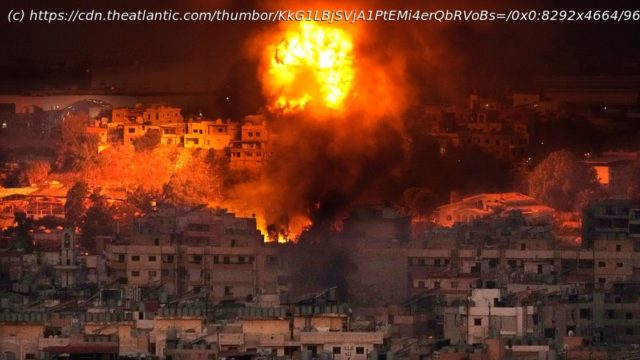How Nasrallah’s death remade the strategic landscape
During a year of conflict in the Middle East, Israel and the Palestinians have bled while Iran and its regional allies have benefited at virtually no cost. Now Israel appears to have reshaped the landscape with its devastating war on Iran’s most powerful proxy, Hezbollah, in Lebanon. Hezbollah’s leadership is decimated, its command and control in disarray, and its intelligence and inner workings thoroughly penetrated, exposed, and vulnerable. Its personnel and heavy equipment are being degraded on a daily basis. Tehran’s strategy of relying on Hezbollah and other militant groups to provide an Arab-forward defense against Israeli or American attacks on Iran’s homeland or nuclear facilities appears to be failing, potentially decisively.
Hezbollah is entirely a creature of Tehran, unlike Hamas and the Houthis, which, though backed by Iran, were not founded under the Islamic Republic’s tutelage and have religious and political differences with it. Established in the immediate aftermath of the Israeli invasion of Lebanon in 1982 and developed during the 18-year occupation that ended in May 2000, Hezbollah was the first Iranian-controlled militia in the Arab world, providing a model that Tehran has successfully replicated in Iraq, Syria, and elsewhere.
As such, Hezbollah has defined its regional role almost entirely around Iran’s objectives. From 2015 to 2017, for example, Hezbollah was the most effective ground force in Syria, propping up the regime of President Bashar al-Assad, Iran’s ally. Under Hassan Nasrallah, the leader killed in an Israeli strike on Friday in Beirut, Hezbollah became the driving ideological force within Iran’s so-called Axis of Resistance in the Arab world.
As useful as this framing has been, it may also have proved to be a fatal miscalculation—literally—for Nasrallah and other Hezbollah leaders since October 7. Some reports suggest that, in the summer of 2023, Hamas officials floated the prospect of an offensive against the Jewish state to Hezbollah and Iranian leaders. Hezbollah and Iran apparently took the conversation as aspirational and vague rather than as a specific plan. When Hamas attacked southern Israel from the Gaza Strip on October 7, Hezbollah therefore faced a crisis.
Nasrallah’s rhetoric of unity, along with Hezbollah’s longtime encouragement of Hamas’s fight against Israel, left the Lebanese group vulnerable to Hamas’s demand for assistance in the new war. But this was not Hezbollah’s assignment from Iran. Gaza has no strategic, religious, historic, or cultural significance for Iran or Hezbollah. Hamas, a Sunni group, fits very awkwardly into Iran’s otherwise almost entirely Shiite alliance. Indeed, Hamas and Iran were on opposing sides in the war in Syria, leading to a rift that lasted many years.
Although answering Hamas’s call in earnest was out of the question, Hezbollah, given Nasrallah’s previous rhetoric, felt it had to do something.






